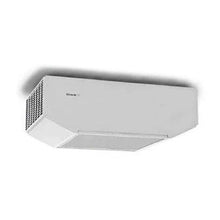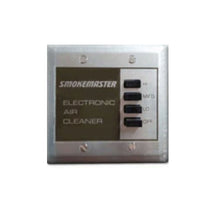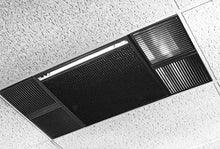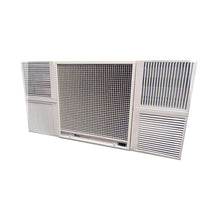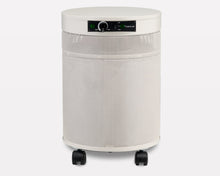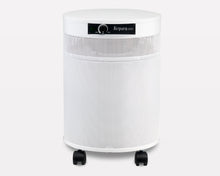The Aficionado's Sanctuary: A Technical Guide to Perfecting Your Cigar Lounge Air Quality
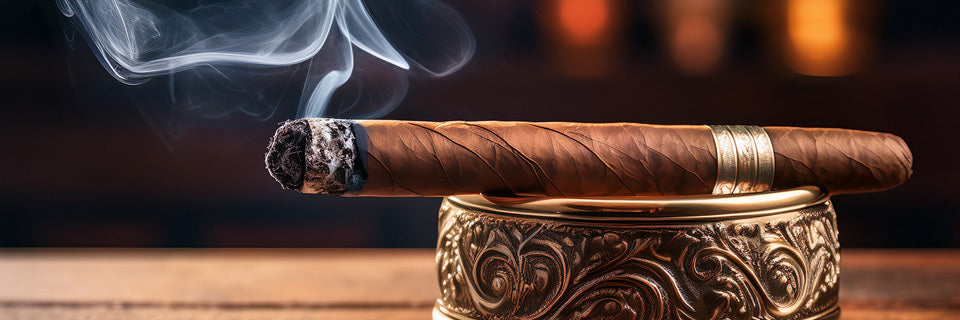
By the Experts at Commercial Air Purifiers | Published: October 16, 2025
The true cigar aficionado understands craftsmanship. You appreciate the meticulous art of a hand-rolled Churchill, the patient aging of the tobacco, and the complex harmony of flavors that a master blender achieves. Your humidor is perfectly calibrated, your cutter is precise, and your choice of beverage is a thoughtful pairing. Every element is chosen to enhance the experience. Yet, there is one critical, invisible element that is often overlooked: the air in your lounge. Just as a smudged glass can ruin a fine wine, poor air quality can diminish the nuance of a premium cigar.
Achieving pristine air quality in a personal cigar lounge is the final step in creating a truly uncompromising sanctuary. It requires moving beyond residential gadgets and adopting the same scientific principles used in the world's finest cigar bars. This technical guide is for the enthusiast who seeks perfection in every detail. We will break down the science of smoke, demystify the key performance metrics, and provide a blueprint for engineering an environment where the air is as clean and sophisticated as the cigars you enjoy.
The Unseen Element: Why Air Quality is the Final Frontier for the Cigar Aficionado
When a premium cigar is lit, it releases a surprisingly complex and aggressive array of airborne contaminants. Managing this is not simply a matter of controlling an unpleasant smell; it's an exercise in environmental engineering. The smoke from even the highest quality, all-natural tobacco is a dense mixture of fine solid particles, gaseous pollutants, and odorous chemicals that presents a significant challenge to indoor air quality.
The most immediate component is Particulate Matter (PM), specifically the ultrafine PM2.5 particles that make up the visible smoke. These particles are incredibly small—less than 2.5 microns in diameter—allowing them to hang in the air for hours and penetrate deep into the respiratory system. But the challenge extends far beyond what you can see. According to the U.S. Centers for Disease Control and Prevention (CDC), tobacco smoke contains a staggering cocktail of over 7,000 chemicals, including hundreds of toxic Volatile Organic Compounds (VOCs). These gases are the true source of the persistent, hard-to-remove odor that permeates furniture and lingers for days.
For the aficionado, this has a direct impact on the sensory experience. A room saturated with the stale VOCs of a previous session will inevitably interfere with your palate. When you are constantly breathing in this "old smoke," your ability to detect the subtle, fresh notes of cedar, leather, or spice from the cigar in your hand is significantly diminished. Achieving perfect air quality is therefore not just about health and cleanliness—it's about preserving the integrity of the tasting experience itself.
The Professional's Toolkit: Moving Beyond Residential Solutions
Creating a pristine smoking environment requires a two-pronged approach that mirrors the systems used in high-end commercial lounges: strategic ventilation to handle the bulk of the smoke, and advanced purification to scrub the air of the remaining, stubborn pollutants. Relying on one without the other is a common mistake that leads to unsatisfactory results.
The Brute Force Method: Strategic Ventilation
Ventilation, in its simplest form, is the process of exchanging indoor air with outdoor air. In a professional setting, this is achieved with powerful exhaust fans that create negative air pressure. This ensures that smoke is constantly being pulled out of the room and prevents it from leaking into other parts of the building. This "brute force" method is highly effective for removing the initial, dense clouds of smoke and heat generated during a smoking session. It is an essential first step in managing a heavy smoke load. However, ventilation is fundamentally a tool of dilution, not elimination. It cannot capture the fine particles and gaseous VOCs that remain suspended in the air and have already begun to settle onto surfaces.
The Finesse Method: Advanced Air Purification
This is where the science of air purification becomes paramount for the aficionado. Unlike ventilation, purification is a process of removal. An advanced system pulls the contaminated air through a series of specialized filters, trapping and neutralizing the pollutants. For the unique challenge of cigar smoke, two specific filtration technologies are non-negotiable.
HEPA Filtration for Particulates: The first stage is a True HEPA filter. This is a medical-grade medium certified to capture 99.97% of all airborne particles as small as 0.3 microns. This is your defense against the PM2.5, soot, and ash that cloud the air, settle as dust, and pose a respiratory health risk. As the World Health Organization (WHO) has extensively documented the dangers of PM2.5, its removal is a critical aspect of maintaining a healthier indoor environment.
Mass-Scale Carbon Adsorption for VOCs and Odor: The second, and arguably more important, stage for a cigar lounge is a massive activated carbon filter. Activated carbon works via adsorption, a chemical process where gas molecules bond to its surface. The key differentiator between an amateur setup and a professional one is the sheer mass of carbon used. A consumer-grade purifier might have a filter sprayed with a few ounces of carbon dust, which will become saturated and useless in a single session. A true smoke-eating system designed for an aficionado will contain a deep-bed carbon filter weighing 15, 20, or even 25 pounds. This enormous capacity is necessary to handle the heavy, continuous load of VOCs from cigars, ensuring complete odor elimination.
Engineering Your Environment: Key Performance Metrics for the Serious Enthusiast
To select the right equipment, the aficionado must think like an engineer. Marketing claims are irrelevant; performance is dictated by measurable data. The two most important metrics for designing your lounge's air management system are its airflow capacity (CFM) and its filtration efficacy (carbon load).
Mastering CFM and ACH: The Science of Airflow
CFM, or Cubic Feet per Minute, measures the volume of air a unit can move. This is the raw horsepower of your system. This metric is used to determine the number of Air Changes per Hour (ACH) your system can achieve for a given room size. ACH is a measure of how many times the entire volume of air in your room can be cleaned in one hour. For a space with active, heavy smoking, a target of 10-12 ACH is the professional standard. This ensures the air is completely scrubbed every five to six minutes, preventing the buildup of pollutants.
To calculate your system's required capacity:
-
Determine your lounge's volume in cubic feet (Length x Width x Height).
-
Multiply this volume by your target ACH (use 12 for a premium result).
-
Divide the result by 60 to get your required CFM.
Example: A well-appointed 20-foot by 15-foot lounge with 9-foot ceilings has a volume of 2,700 cubic feet.
(2,700 cubic feet×12 ACH)/60 minutes=540 CFM
Your system must be able to deliver a sustained 540 CFM to meet the professional standard for this space.
Carbon Load and Dwell Time: The Chemistry of Odor Elimination
The "Carbon Load" simply refers to the total weight of activated carbon in your filtration system. This is the single most important factor in a system's ability to eliminate odor over the long term. A higher carbon load means more surface area for adsorption, translating to a greater capacity for removing VOCs before the filter needs replacement.
A related concept, valued in high-end system design, is "Dwell Time." This is the length of time the contaminated air is in direct contact with the carbon media. The design of the filter and the airflow speed can be optimized to increase dwell time, allowing for more complete adsorption of difficult-to-capture chemicals. The U.S. Environmental Protection Agency (EPA) notes that the effectiveness of gas-phase filters like activated carbon is highly dependent on their design. Systems with deep-bed carbon filters inherently provide a longer dwell time, leading to far superior odor and VOC removal compared to thin, coated filters.
The Sanctuary Blueprint: Integrating Air Quality into Your Lounge Design
Achieving perfect air quality is also a matter of smart design and integration. The best equipment in the world will underperform if it's not implemented correctly within the space.
System Integration: Consider how the purification unit, often called a "smoke eater" in this context, will fit into your lounge. Freestanding units offer flexibility, while ceiling-mounted systems can provide excellent room-wide air distribution without occupying floor space. The goal is to create a consistent, gentle circulation pattern that systematically draws smoky air toward the unit.
Material Selection: The aficionado's preference for rich, high-quality materials like hardwood, leather, and stone has a direct air quality benefit. These non-porous surfaces do not trap the sticky residue of thirdhand smoke, unlike carpets and heavy fabrics. They can be easily wiped clean, ensuring your sanctuary remains pristine in every sense.
Airflow Dynamics: For the ultimate setup, position your purification system to work with the natural flow of air. The goal is to create a subtle current that pulls smoke away from the seating areas and directly towards the filtration intake. This prevents smoke from lingering around occupants and ensures it is captured and eliminated with maximum efficiency.
Assembling Your Professional-Grade Air Management System
Building your perfect sanctuary is a project that deserves the best equipment and a sound strategy. Follow these steps to engineer an uncompromising air quality solution.
-
Define Your Specifications: Begin by calculating your room's air volume and the required CFM to achieve a minimum of 10-12 ACH. Treat this as the core technical requirement for your project.
-
Prioritize Filtration Media: Select a system based on the quality and quantity of its filters. Insist on true HEPA filtration for particles and a massive activated carbon filter—at least 15 pounds—for non-negotiable odor and VOC elimination.
-
Integrate for Optimal Flow: Plan the placement of your unit deliberately. Position it to create a comprehensive air circulation pattern that covers the entire room, leaving no stagnant dead zones.
-
Operate Like a Professional: For maximum effectiveness, your system should be running continuously while the lounge is in use and for at least two to four hours afterward. This ensures the complete removal of all lingering pollutants and prevents odors from ever taking hold.
For this level of performance, you need equipment designed for the task. Explore our collection of professional-grade smoke eaters to see the technology used in the finest establishments. For a more technical exploration of airflow calculations, visit our guide, A Deep Dive into CFM and Air Changes Per Hour (ACH).
The Final, Perfecting Element
For the cigar aficionado, the pursuit of the perfect experience is a passion. You've curated your cigars, your humidor, and your lounge with exacting standards. The final element to master is the air itself. By moving beyond simple solutions and investing in a professionally engineered air purification system, you are not just clearing smoke—you are enhancing your palate, protecting your investment, and creating a sanctuary where every detail is, quite simply, perfect.
Build the ultimate cigar lounge. Explore our collection of professional-grade smoke eaters.
An Aficionado's Technical FAQ
What is the difference between a smoke eater and a standard air purifier?
While the terms are sometimes used interchangeably, "smoke eater" typically refers to a commercial-grade air purifier specifically designed for heavy smoke loads. The key differences are a much higher CFM rating (power) and, most importantly, a significantly larger activated carbon filter to handle the extreme concentration of VOCs and odors produced by tobacco smoke. A standard purifier is designed for lighter loads like dust and allergens and will fail quickly in a smoking environment.
Can an ozone generator solve my smoke problem?
Absolutely not. While ozone does neutralize odors, the EPA has issued clear warnings that ozone is a toxic gas harmful to the respiratory system. Intentionally releasing ozone into an occupied space is dangerous. It is an unsafe, unprofessional solution that has no place in a high-end cigar lounge.
Will a powerful air purifier dry out my cigars or affect my humidor?
This is an excellent and common question. A standalone air purification system will not affect your room's humidity. Air purifiers are designed to filter pollutants from the air that passes through them; they do not have a dehumidifying function. Your properly calibrated humidor's performance will not be impacted.
Should I combine my purifier with an exhaust fan?
Yes, for the absolute best results, this is the professional approach. An exhaust fan's job is to manage pressure and remove the bulk of the hot, concentrated smoke. This reduces the immediate load on your air purifier, allowing it to work more efficiently on its primary task: scrubbing the remaining fine particulates and VOCs from the air to achieve a truly pristine environment.

